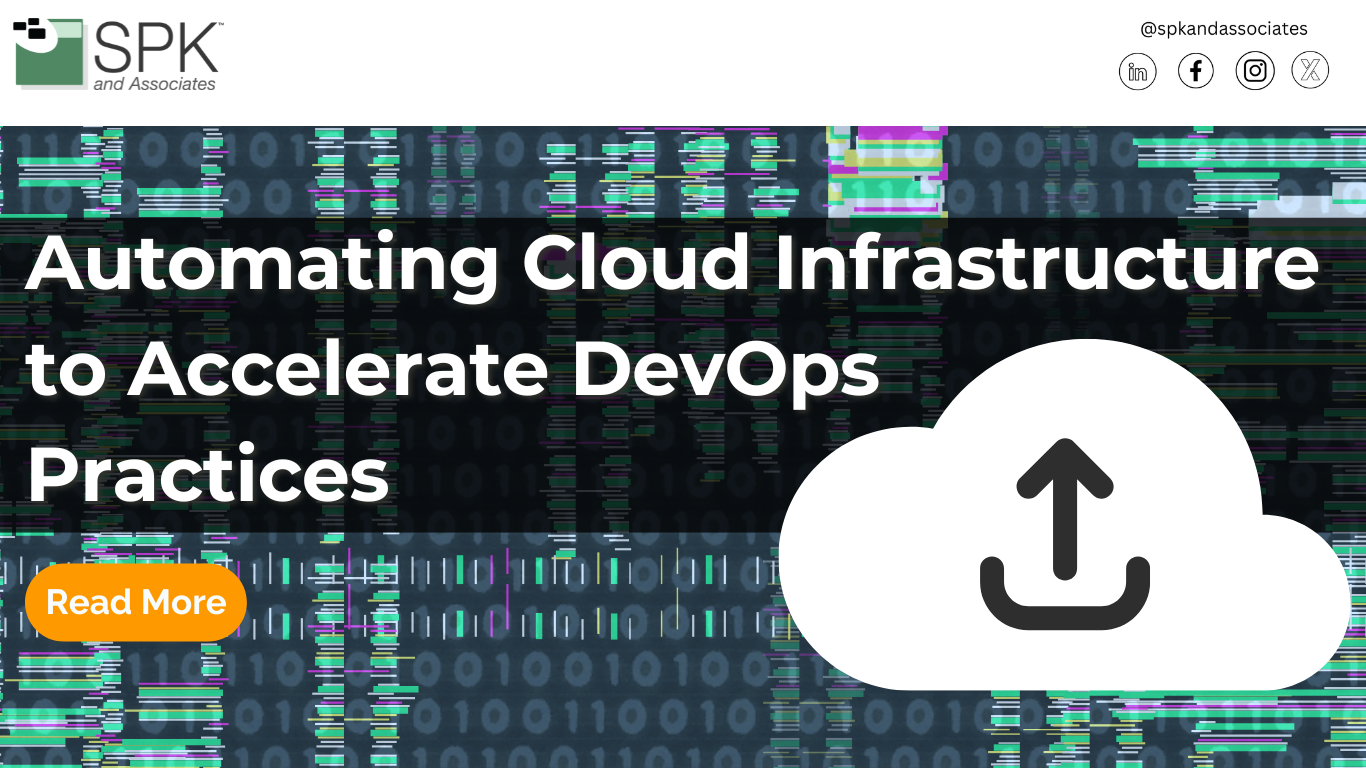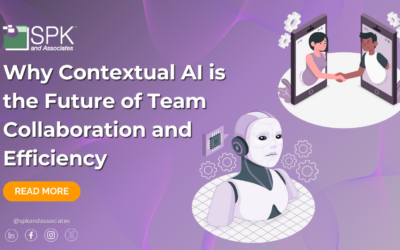The practice and philosophies of DevOps have become vital to nearly every software development and IT business. DevOps, standing for “development” and “operations”, consists of practices aimed at streamlining the software development lifecycle. Its goal is to deploy software faster by increasing collaboration, quality, productivity, and security. Many businesses utilize cloud-based services to help implement DevOps, but cloud services can bring their own challenges. Cloud-based services must be set up, configured, deployed, and managed. Luckily, cloud infrastructure management can be automated by tools. Cloud infrastructure automation enhances DevOps efficiency by streamlining processes, reducing manual errors, and enabling scalability.
The Evolution of DevOps
Before diving into cloud infrastructure, let’s go over a brief history of DevOps. DevOps was created to solve the issue of slow and unreliable software delivery. In the early days of software development, development teams wrote code, and operations teams deployed applications. This distinct separation often led to miscommunication between teams. Continuous Integration and the Agile Manifesto were developed in the early 2000s, leading to more frequent releases and better alignment with customer needs. The Agile movement alleviated some issues but did not fully resolve the miscommunication.
In 2009, Patrick Debois coined the term DevOps, a concept aimed at bridging the gap between development and operations. Technology continued to progress in the 2010s, leading to continuous delivery and an increase in cloud computing platforms that supported scalable DevOps practices. This leads us to today. Some newer adaptations include DevOps toolchains and DevSecOps which integrates security into the lifecycle. DevOps has created a cultural shift. It acknowledges the importance of shared responsibility and continuous improvement while highlighting a need for automation. Market demands for faster, consistent delivery have created the perfect opportunity to automate these processes.
Understanding Cloud Infrastructure Automation
Cloud infrastructure automation is when automated processes manage, configure, and orchestrate cloud resources or services. Repetitive tasks are automated to ensure efficient infrastructure management across cloud environments. The key aspects of cloud infrastructure automation are:
- Configuration management: Automated configuration maintains consistent product performance.
- Auto-Scaling: Continuously adjusting resource allocation based on demand and distributing traffic evenly across servers ensures cost efficiency and optimal performance.
- Compliance and Security: Automated checks enforce security and compliance requirements.
- Provisioning: Cloud automation sets up cloud resources such as storage and network components.
- Disaster Recovery: Backup processes and recovery plans are automated to ensure data integrity.
- Monitoring and Logging: Continuous observation identifies and addresses issues.
- Infrastructure as Code (IaC): IaC manages computing infrastructure through machine-readable configuration files rather than physical hardware configuration.
- Continuous Integration/Continuous Deployment (CI/CD): CI/CD enables automatic, frequent, and reliable releases of software.
It is clear from these aspects that cloud infrastructure automation involves many processes and tools to optimize cloud resources. Automation enhances cloud computing through scalability, monitoring, disaster recovery, efficiency, and more to achieve successful business outcomes.
Benefits of Automating Cloud Infrastructure in DevOps
As we briefly touched on, there are many benefits of automating cloud infrastructure. The first benefit is scalability and flexibility. Dynamic scaling ensures workloads can be handled without the need for manual intervention. Additionally, scaling up and down can save money. Another benefit is faster deployment times. Automated pipelines allow code to be deployed faster and more frequently which enables continuous delivery. Security policies can also be embedded into these pipelines, ensuring compliance. Lastly, automation allows for improved consistency. IaC manages infrastructure through code to ensure consistent environments. This along with automating repetitive tasks reduces human error and creates a more reliable system overall.
Key Tools and Technologies for Automation
There are amazing benefits of automation, but how do you achieve these results? Commonly, businesses utilize automation tools. Let’s go over a few popular ones and their functions.
- Terraform: An Infrastructure as Code tool automating the provisioning and management of cloud infrastructure across multiple cloud providers using a high-level configuration language.
- Ansible: A configuration management tool automating the setup, configuration, and management of cloud resources and applications. Additionally, it simplifies repetitive tasks and ensures consistency across environments.
- Amazon Web Services: AWS offers a range of tools such as AWS CloudFormation (IaC), AWS Lambda (serverless computing), and AWS CodePipeline (CI/CD) to automate infrastructure provisioning, application deployment, and resource management.
- Microsoft Azure: Azure offers tools like Azure Resource Manager (IaC), Azure Functions (serverless computing), and Azure DevOps (CI/CD) to automate the deployment, management, and scaling of cloud resources and applications.
- Atlassian: Atlassian offers many tools that aid in automation. Examples include Jira and Bitbucket which integrate with CI/CD tools and automate repetitive tasks like code reviews.
- GitLab: Gitlab is a DevOps platform offering CI/CD pipelines that automate the process of building, testing, and deploying code. Additionally, GitLab can integrate with IaC tools and cloud service providers like AWS and Azure.
As you can deduce from these examples, IaC, CI/CD, and serverless computing tools are the most common automation aids. Each one of these tools streamlines and automates different aspects of cloud infrastructure, enhancing efficiency, consistency, and scalability.
Use Cases: Success Stories in Automation
Now that we have covered the benefits of cloud computing automation and the tools used to achieve them, let’s explore some real-life examples. Netflix is one of the best examples of properly implemented automation in DevOps. Netflix’s software developers employ a process that allows them to roll out new changes and save them to a web image. If any new code has issues, users are routed to an earlier version of the site which does not disrupt their streaming. This is possible due to cloud automation which offers continuous availability for users.
Another great example of DevOps in action is Amazon. Amazon utilizes its own service, AWS Cloud. The company uses a provisioning system to automatically scale up or down as well as cloud automation to deploy new software. This automation makes it easier to deploy software across Amazon’s thousands of servers which would otherwise be very difficult manually.
Challenges and Considerations
Although there are many cloud automation success stories, it’s important to explore the challenges of implementation. The first challenge is tools can appear complex and difficult to integrate. The best way to resolve this is by conducting thorough research to choose the best tools and partners for your business. Experienced consultants can provide support through the implementation process. This lack of confidence may also be caused by skill gaps. Providing training programs for employees can help alleviate uncertainties with new tools.
Another common issue is security and compliance misconfigurations. The best way to prevent these is by establishing a clear standardized process to ensure security and regulatory compliance. Cost management is another additional challenge, however, optimizing automated processes ensures cost-effectiveness and prevents unexpected costs. Automation processes should also be designed to scale effectively with an organization’s growth to prevent scalability issues. Lastly, some teams may be resistant to automation as it is a new process. The best way to overcome this is by encouraging collaboration, experimentation, and innovation. A supportive environment makes employees more open to testing new processes.
Future Trends in Cloud Automation and DevOps
Emerging Technologies
The growth of automation and DevOps has created some incredible new technologies. Some emerging technologies to watch include:
- GitOps: GitOps practices, which use Git as a single source of truth for infrastructure and application configurations, automate infrastructure and manage software deployment.
- Serverless Computing: Serverless platforms like AWS Lambda, Azure Functions, and Google Cloud Functions allow developers to focus on code writing while the cloud provider manages the underlying infrastructure automatically.
- Service Mesh: Examples include Istio and Linkerd. Service Mesh technologies are a dedicated software layer for managing service-to-service communication, and enhancing security and resilience in microservices architectures. Its goal is to allow the networking to be managed independently.
- Kubernetes Operators: Kubernetes Operators enable the automation of complex Kubernetes applications, increasing automated deployment and management.
- Chaos Engineering: Tools like Chaos Monkey, Gremlin, and Chaos Toolkit allow organizations to inject failures into their systems to identify weaknesses and improve resilience.
Predictions for the Future
These technologies, although already useful, will become increasingly important in the future. Other predictions for the future include:
- Infrastructure as Code (IaC) Enhancements: The next generation of IaC tools and frameworks will offer advanced capabilities such as declarative configuration, policy enforcement, and automatic optimization. This enables efficient and reliable cloud infrastructure management.
- AI/ML-driven Automation: AI and machine learning technologies will be integrated into automation tools to enable intelligent decision-making, predictive analytics, and anomaly detection.
- Security Automation: Security automation solutions will become essential for integrating security practices into DevOps pipelines. These practices will automate vulnerability scanning and compliance checks to mitigate risks and ensure compliance.
- Expansion of Self-Healing Systems: Self-healing systems will become more sophisticated, allowing systems to detect and resolve issues in real time without human intervention.
- Observability Platforms: Platforms like Prometheus, Grafana, and Datadog will continue to evolve, offering advanced monitoring and logging capabilities. These will provide performance and health insights into cloud-native applications.
- Infrastructure Observability: Tools focusing on infrastructure observability, such as HashiCorp Boundary and AWS CloudWatch Insights will become increasingly important for monitoring and troubleshooting cloud infrastructure and resources.
- No-Code/Low-Code Automation: No-code/low-code automation platforms will gain traction, enabling users to easily create and deploy automation workflows with little to no coding knowledge.
These helpful automation tools and processes will continue to alter the future of DevOps, aiding developers and operation specialists in years to come.
Embracing the Future of Automation
Automation in DevOps has a recent history, but a bright future. Automating cloud infrastructure allows businesses to achieve success through better scalability, monitoring, and overall efficiency. While there may be some challenges when implementing cloud automation, businesses can utilize tools such as AWS, Azure, GitLab, and Jira to overcome them. The successes of automation far outweigh any challenges, which is why SPK’s experts encourage businesses to embrace automation for better DevOps practices. If you would like to learn more about cloud automation or have any questions, contact our experts today.











